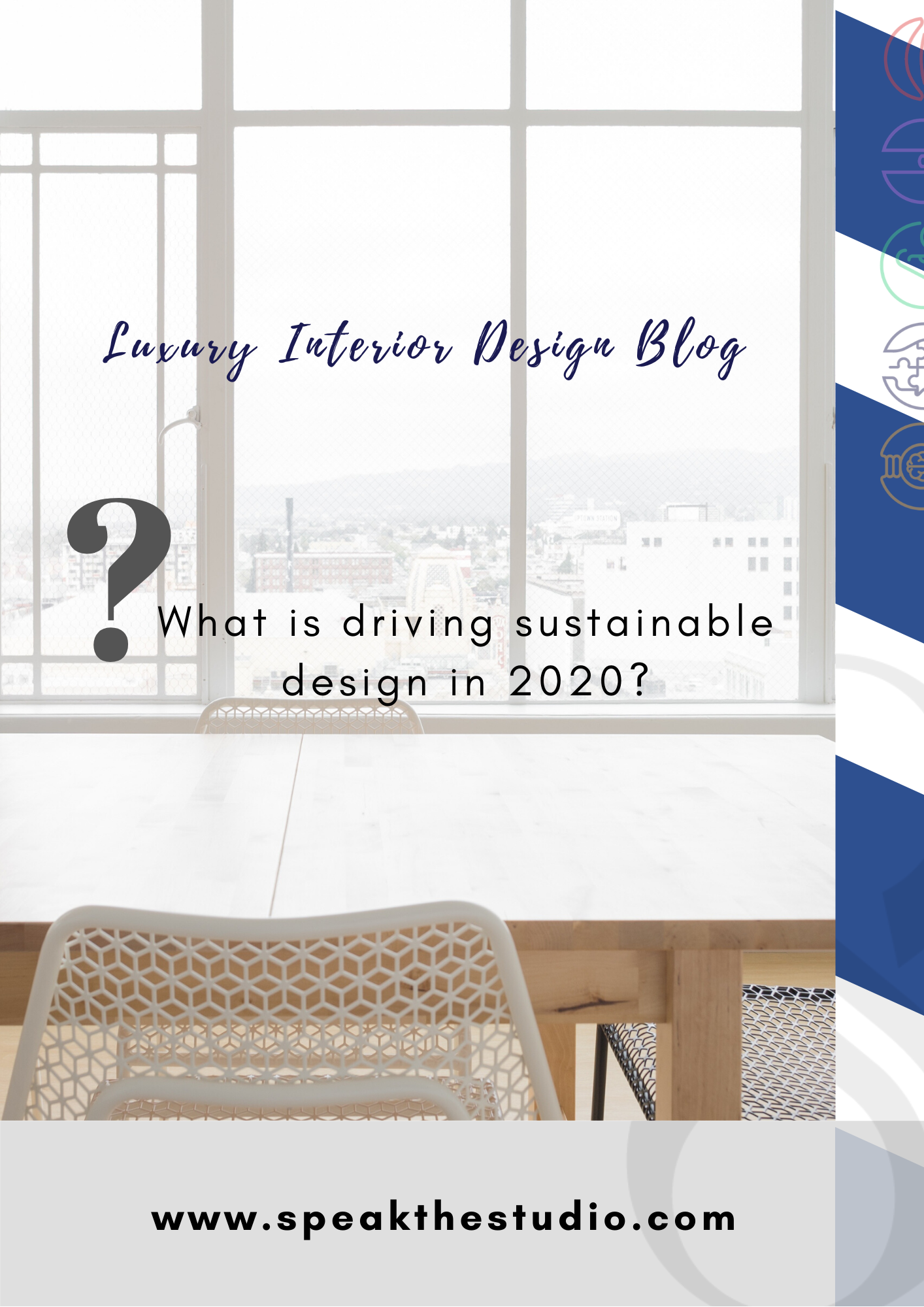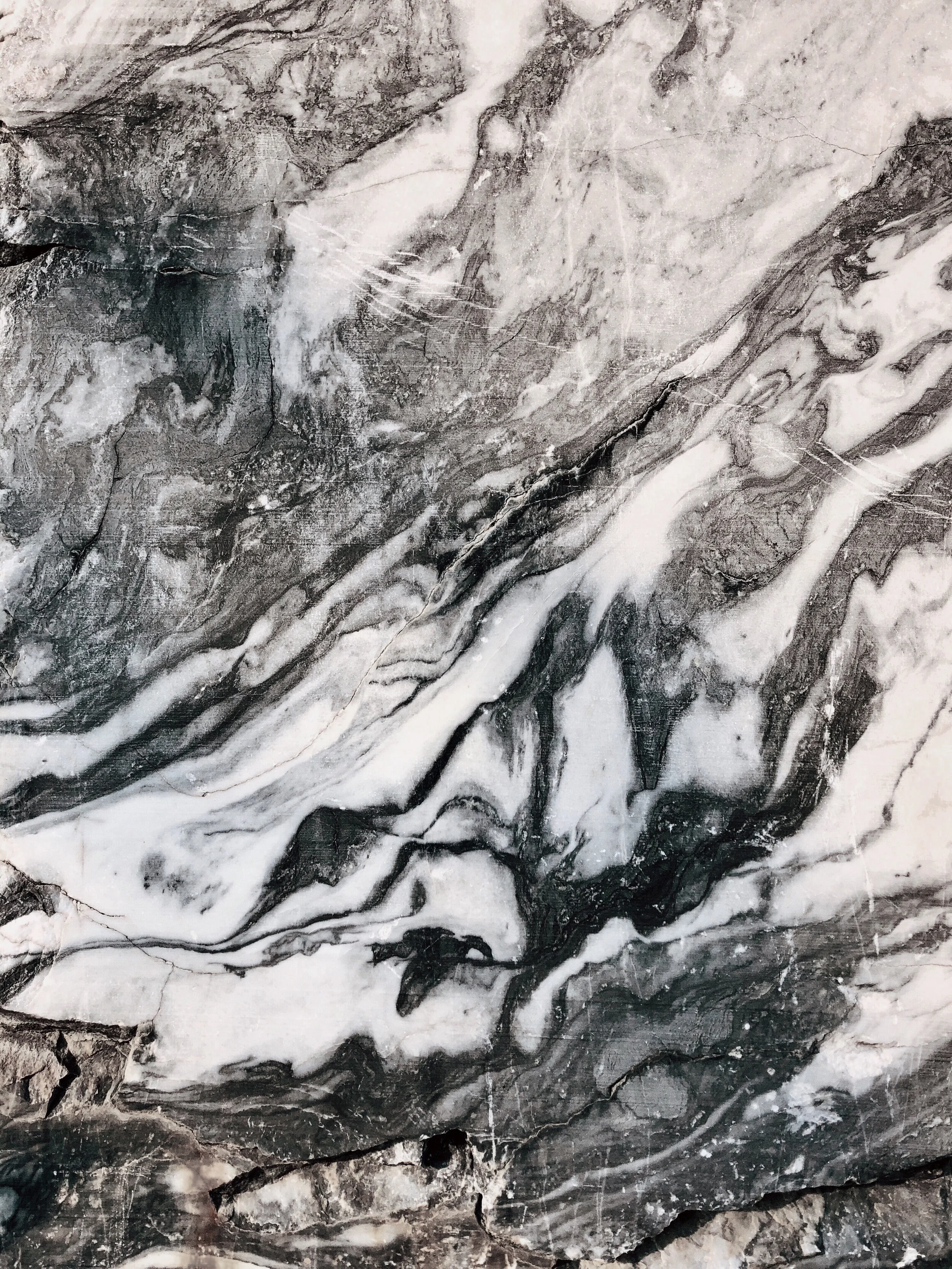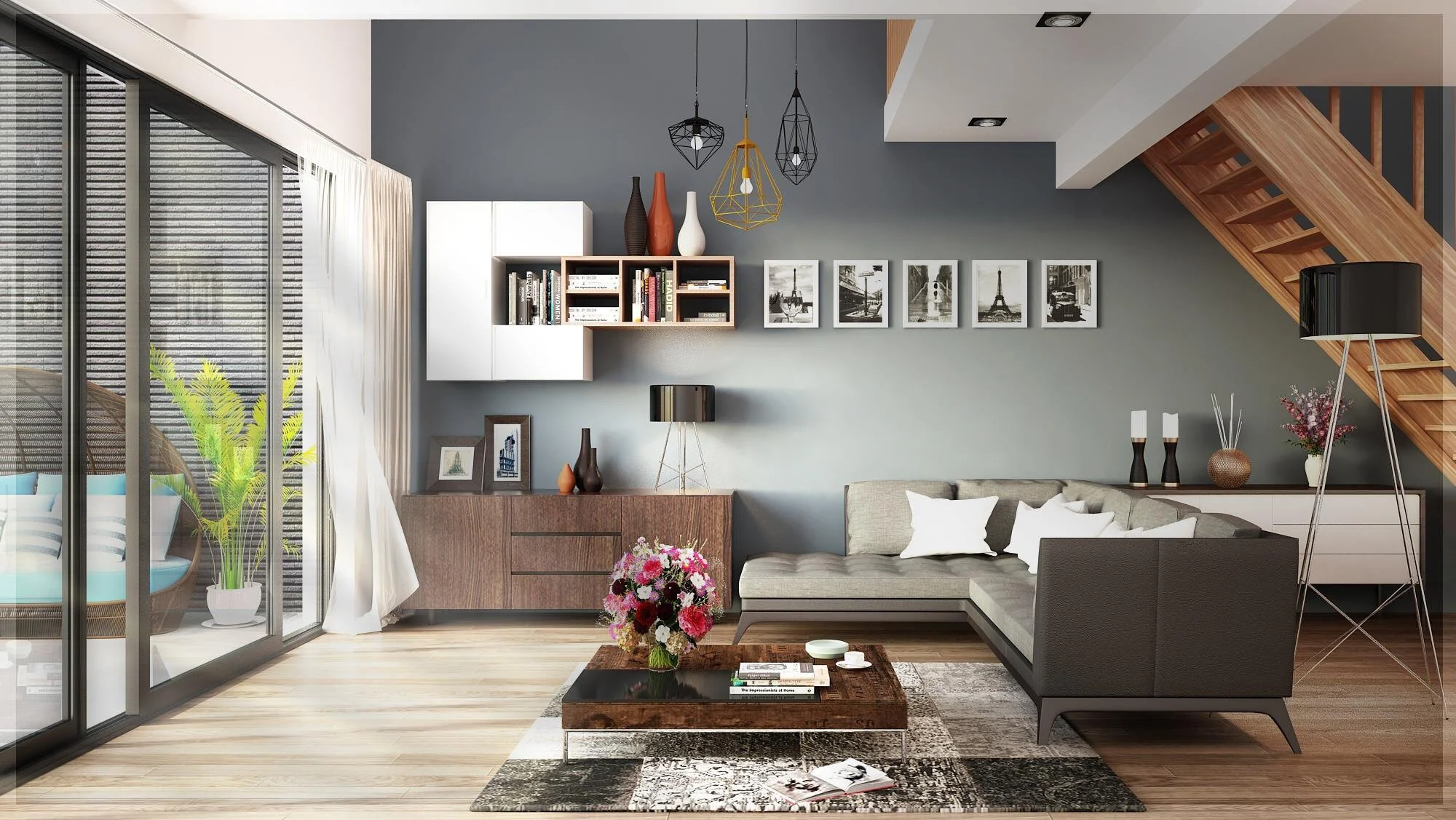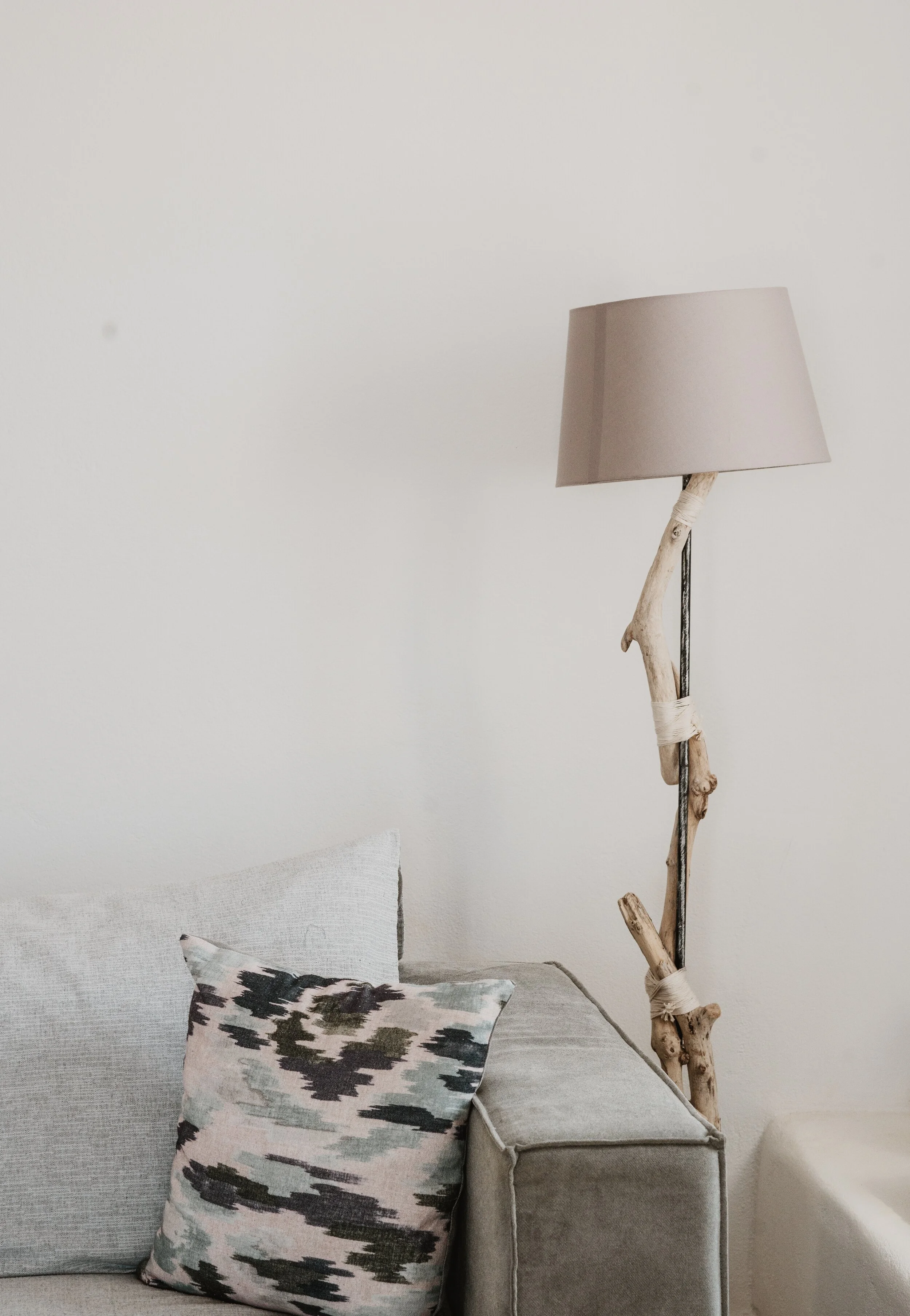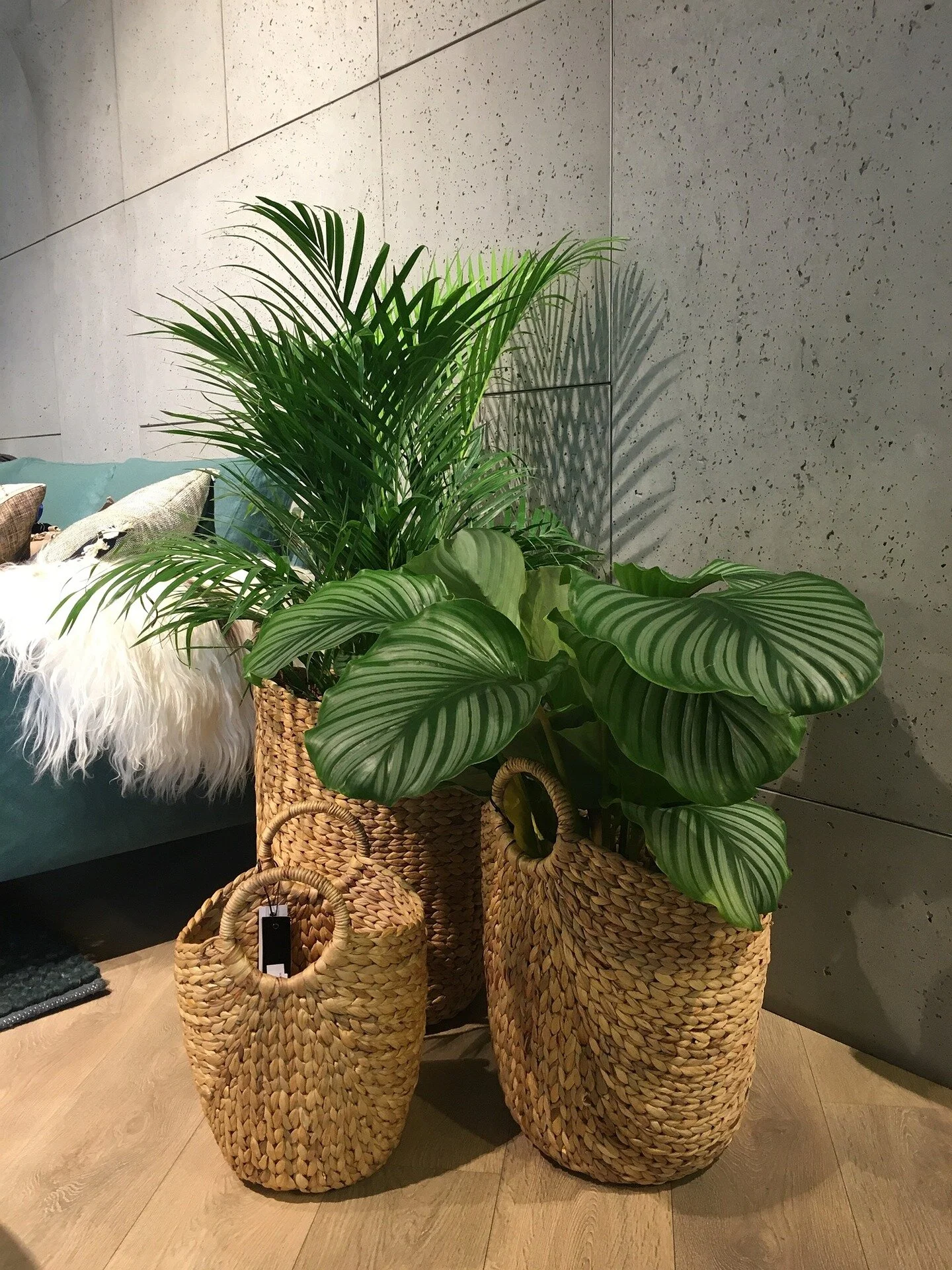Interior Design Ideas: What and Who is driving Sustainable Design in 2020?
INTERIOR DESIGN IDEAS: What is driving Interior Design Sustainability in 2020?
Sustainability is and rightly so the hottest topic in 2020 for every market. The stark realisation of the damage being inflicted upon the planet must change and that includes interior design. Marks and Spencer’s sustainability slogan states: ‘Plan A, because there is no Plan B!’
This blog dives a little deeper into the interior design trends for 2002 and the ideas that are shaping the future of design studios, and interior design services. The designers and experts using existing materials are looking closer to nature to provide the answers and solutions that will drive us to rethink modern living and change the way we think, feel, engage and live with design for a better future.
Ambassadors for change, such as Greta Thunberg and Sir David Attenborough are doing their best to keep sustainability firmly at the top of the agenda, despite the current global pandemic: dare, we mention the Coronavirus.
What is shaping Interior Design Sustainability?
On to more positive news then! The interior design fair circuit in 2020 saw amazing design innovation in respect of ideas for sustainable surfaces, with particular reference to the role the kitchen plays as an interior hub and its usability: working, playing, gathering, entertaining and so on. We believe it is only a matter of time once these tried and tested sustainable surfaces reach other interior spaces: such as furniture, flooring and accessories.
Key take-outs from the fair circuit are the rise of natural stone and multi-functional design, which is leading the way, leaving interior designers with the mission to take on the challenge of making sustainable aesthetically desirable.
A SHIFT TOWARDS THE TECHNICAL….
There is an increase in protective coatings that enhance the performance of different materials.
According to Mar Esteve Cortes, Director at Neolith the Spanish sintered stone manufacturer, Neoliths sustainable offerings garnered a lot of attention during the fair circuit.
"With increasingly strict building regulations, 2020 will see a desire for construction materials with inherent properties that actively protect the public inside and outside the home," Esteve explained.
Manufacturers are looking to technology to further enhance natural materials to add extra functional dimensions to already purposeful materials.
Ideas for Anti-slip treatments have been an exciting development within this area. Stand out manufacturers include, Pureti with their photocatalytic applications which purify urban air.
Sound a bit too technical? Try the layman’s terms version:
The surface treatment (which has been explored by NASA, looking into hygiene in space) utilises a process called ‘Photocatalysis’, as plants create energy a chemical reaction is triggered. This process uses the breakdown of the organic matter released during the chemical reaction. The organic matter when applied to surfaces allows it to stay cleaner for longer, reducing odours and pollutants in the surrounding air.
Sustainable Bespoke Sintered Stone is overtaking natural stone designs.
SUSTAINABILITY IS THE FUTURE OF INTERIOR DESIGN…
Sustainable production should be on the forefront of the agenda of Interior Designers and Architects. As the world takes notice of the threat of climate change, the need for sourcing materials with a low-carbon impact, or that can be recycled, up-cycled or provide the sustainable seal of approval, is fast becoming the ‘norm’ and preferred choice, if it has aesthetic appeal.
A recent popular sustainable option is Sintered Stone, a stone-based surface material that is made to look like other natural materials. It can be made to resemble natural stones, tiles, wood, smooth or textured surfaces and can be produced in a variety of colours, textures, and sizes too.
Many of the innovators behind sintered stone are quartz experts. It is a wholly natural material created by pressing and firing a mixture of granite, glass minerals and natural oxides – as well as terrazzo, which lends itself to the re-purposing of off-cuts that would otherwise have gone to waste. The beauty of sintered stone is in its capacity to mimic other stone materials, whilst having the capacity to help Interior Designers create ideas and bespoke designs through larger veining, which cannot be achieved using the real thing.
"After extensive research and development into surface production, we've been able to create profiles which truly capture the deep veining found in marbles, granite’s and quartzite," said Esteve.
The demand for sintered stone has seen a rise in the creation of carefully crafted distinct textures to create bespoke finishes:
"Over the last year, we've seen an increase in requests for surfaces with a distinct texture," said Esteve. That's why we developed Ultrasoft – a finish that mimics the unique and captivating feel of clean cut, unpolished natural marble." said Esteve.
Terrazzo has also proved extremely popular with its capacity to show-case different colours, grains and patterns, providing an instant win for aesthetic appeal.
A working from home culture is creating a sustainable future.
WORKING FROM HOME CULTURE…
There has been a huge rise (long before we reference the ‘C’ word again) in working from home culture, helping to: reduce traffic, the stressful commute, pollution, noise pollution and create investment in time, which is well spent in a less stressful home working environment. Technology has allowed for the capacity of a more flexible working culture. "People will look to furniture and fixtures which can be adapted for both personal and professional use. This includes large kitchen islands which can function throughout the week either as a work-space, breakfast bar or a casual dining table for entertaining." said Esteve.
Interior spaces are seeing a shift to neutral earthier luxury colour palettes that serve to provide combined home/office environments as more escapist spaces. Ochres, deep rich chocolate tones, earthy, lush warm greens and shades that are more transcending on the colour wheel are becoming more prominent.
Flooring is now seeing various combinations with emphasis on bringing nature inside, intricate natural stone with meticulously placed grained wood will become more common place. Statement tiles including monochrome and patterns normally reserved for architectural dreams will soon be adorning multiple interior spaces.
FEEL INSPIRED…
Bespoke finishes, designs and textures further reinforce the increase in demand for obtaining the ultimate ‘one of a kind’ personalisation that consumers are looking to achieve.
Materials such as cork (yes the one in the bottle!) are shaping sustainable interior design trends. Stand-out, renowned, cool and always ahead of the experimental curve, British Designer Tom Dixon, is launching an exclusive furniture collection made entirely of charred cork with the appearance of Rosewood. Tom has taken the sustainable concept to a superior level, as every element of the construction of the furniture has been meticulously thought through. The furniture has a carbon negative profile, it can be harvested without causing harm to the tree it grows on and is recyclable. It is also absorbent, fireproof, water resistant and lighter than water!
"All this time, the material effectively captures carbon as it grows. The tree continues to grow more bark, that bark captures more carbon and you're planting more trees to make more cork. Meanwhile, the carbon that's stored in the cork stays in the furniture pieces unless it is burned. In terms of a dream material, you couldn't really get a lot better." Tom Dixon. (www.tomdixon.net).
Are all business’s working towards a circular economy?
THE CIRCULAR ECONOMY…
A circular economy is an alternative to a traditional linear economy (make, use, dispose) in which we keep resources in use for as long as possible, extract the maximum value from them whilst in use, then recover and regenerate products and materials at the end of each service life. This method of sourcing and using materials helps us to define the wealth in waste. Smaller Interior design companies are already leading the way in design using this method. It’s noticeable that large manufacturers are now looking more closely at options to re-shape their production processes to improve their sustainable offerings, even Lego, producing a small trial quantity of plant based bricks.
Products such as ‘Another Brands- Mosaico’, which are solid wood tiles made from 100 per cent recycled wood, sourced from the furniture manufacturing industry, to ‘Dust London’s’ re-use of tea waste to make beautiful origami household objects. Expect to see a lot more collaborations transforming waste and re-introducing it back into the circular economy, including amazing interior design.
THE ART OF NUNCHI….
The Scandinavian lifestyle concept of ‘Hygge’ seems to be over, in its place is a 5,000 year old Korean concept called ‘Nunchi’. Nunchi is simply defined as the art of reading a room, how you connect and relate to others to get ahead. Nunchi emotional intelligence is more observational and emotionally neutral, and its purpose is to improve your way in life by enabling you to be less self-absorbed and more aware of the collective temperature of the room while maintaining individual integrity. Introducing this approach into interior design and how you create observations and emotionally neutral spaces is an exciting one for the interior industry.
A return to being connected to nature and dialogue?
THE RETURN OF DIALOGUE…
We have most certainly reached technological exhaustion, constantly needing to upgrade to the latest models is declining and the need for a return to more simple things has seen been sparked by huge growth in items such as books, rising by 5%, generating £5.7 billion in the UK (* Source Sunday Times). Crafting, pottery and live music have also seen a resurgence.
Interior Design has seen a rise in the desire for personalised home-made bespoke items, items that demonstrate love, time, labour and connection have gone into producing them. Commercial Interior spaces have seen a shift from having just technology to facilitating more engagement and improvement in dialogue, links to nature and social media free zones!
Here in Manchester, UK, at SPEAK Interior Design we hope you find our blogs interesting and insightful. If wish to know more we invite you to make contact with our design studio with any questions or to collaborate or enquire about a project.
If you enjoyed reading this informative blog:
Connect | Comment | Share
Hello From Speak,
We relish the opportunity to home stage and create interior design’s that inspires. We love to maximise space, leverage colour, and blend architectural features with modern design.
Contact us to SPEAK about your home staging or interior design project’s. We would love to hear from you and explore the rich possibilities!

